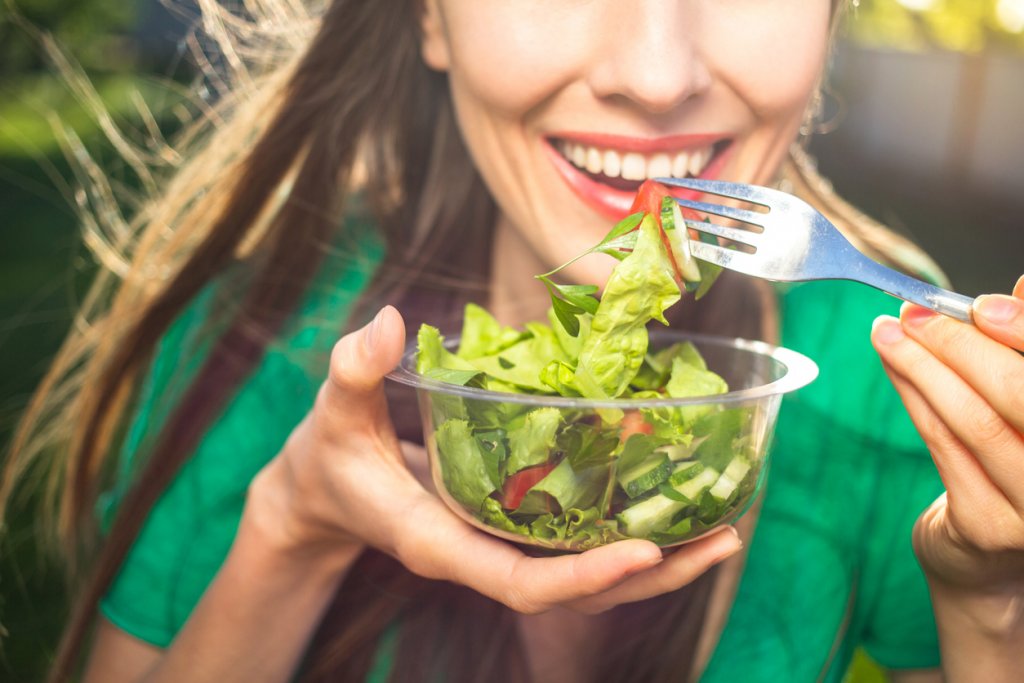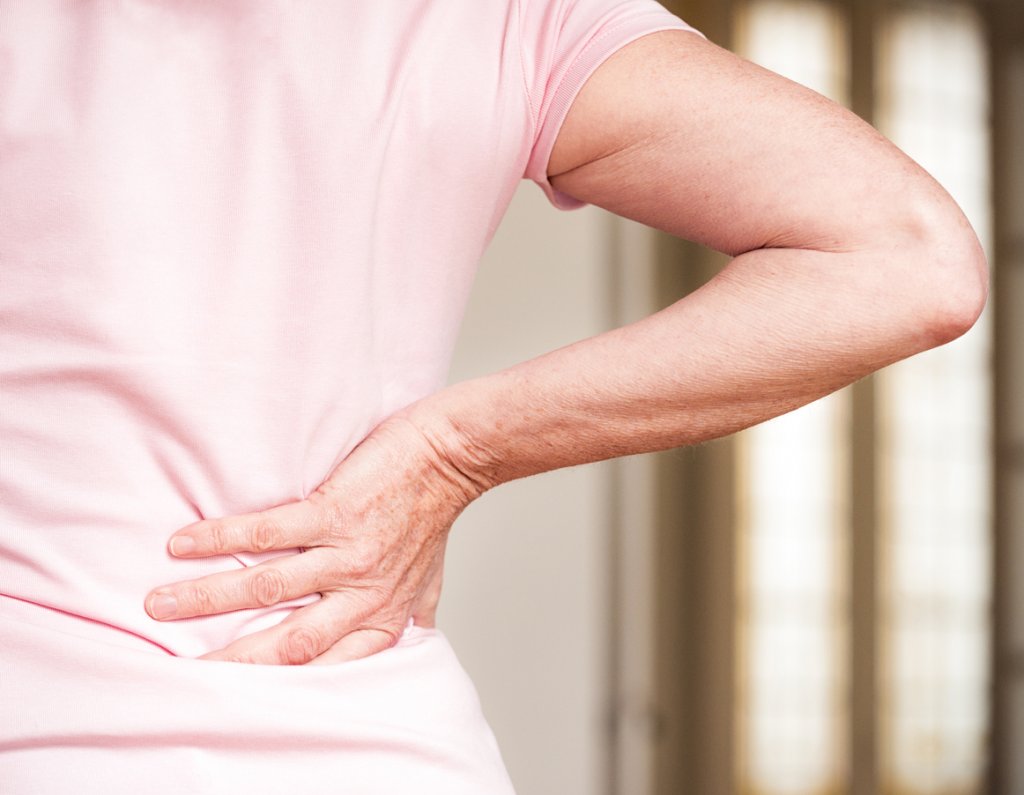Few things bond women together more than their frustration about how hard losing weight after 50 is — and, of course, how easy it is to “find” those extra pounds. Even women who could “eat anything” in their younger years may suddenly find that their wardrobes need adjusting. So, what’s the deal? Is middle-aged spread a real thing? And if so, do we have to live with it?
Problem: You’re Not Cutting Your Calories

Of all the factors that make weight loss harder after 50, decreased metabolism is the one most women are familiar with. Metabolism is the rate at which calories are burned. A complex set of factors explains why metabolic rates continue to decline after 30.
Muscles, which burn more calories than fat, tend to decrease in mass. In addition, hormonal fluctuations that happen during menopause influence metabolism. As estrogen and testosterone levels decline, metabolism rates decrease.
Yet even though most women are familiar with the dreaded slowdown of their metabolisms, they don’t quite put two and two together when it comes to calories. Fewer calories burned in an average day means fewer calories are needed. And if those calories aren’t cut, they become extra pounds.
Solution: Take a Hard Look At Your Daily Diet
Unless you’ve started training for a marathon, you’re going to need to cut calories in order to keep the excess weight off. For the average woman, it’s not a drastic amount — about 100 fewer calories a day. Yet neglecting to trim those calories can add up to about 10 pounds within a year.
Once women reach age 50, their calorie needs decrease from 1,800 to 2,000 calories per day to 1,600 to 1,800 calories per day. If you’ve been hovering around the 2,000-calorie mark, consider where you might cut those extra 100 to 200 calories.
Portion control is often your best bet, rather than depriving yourself of certain foods altogether. On the other hand, if you’ve been meaning to give up cream in your coffee and the cheese on your turkey sandwich, now is the perfect time to do so.
Problem: You Let Those New Aches and Pains Intimidate You

Sometime after your 50th birthday, your body seems to produce an ever-expanding bag of unwelcome tricks. You wake up with an aching lower back. Or you routinely find your neck stiffened and throbbing after a day at the office.
Ironically, just when your decreased muscle mass and lowered metabolism should be prompting you to work out more, your body seems to be urging you to hit the couch and avoid more pain. And, of course, with less activity comes more weight gain.
Solution: Take Baby Steps — But Keep Moving
A program that’s heavy on stretching is a good place to start building the kind of flexibility that helps ease joint pain and muscle spasms. If you’re not into yoga classes, return to the toe touches, neck rolls, and arm stretches you remember from school. They can help prevent those after-work aches and early-morning kinks. If needed, consider wearing a brace or bandage to support problematic joints.
Once your body gains some flexibility and pain is less of an issue, you can begin walking and swimming — two activities that are easy on the knees and lower back. Both are also excellent for helping burn calories and jump-start metabolism. Or return to another physical activity that you’ve dropped in recent years because of the twinges it brought.
Problem: Muscles Begin to Sag
The loss of muscle mass, known as sarcopenia, is a natural consequence of aging in less-active adults. It’s believed that around the time they hit their middle years, people can lose up to 1 percent of their existing muscle mass each year. And the less muscle mass you have, the lower your metabolism.
Solution: Join the Resistance!

It’s a scary thought that you might lose 10 percent of your muscle mass with each decade. But sarcopenia with aging is not inevitable. Physically inactive people are most at risk of losing muscle, along with a plummeting metabolism.
Not surprisingly, strength training moves and nutrition are the best way to halt the loss of more muscle. Whether you prefer free weights, push-ups, or resistance bands, working your arms, legs, and core a few times a week makes a big difference in losing weight after 50. (As a bonus, strength training also helps prevent bone loss — a big concern after 50.)
In addition, increase your protein intake. High-protein foods work together with resistance training to turn fat into muscle. But you’ll need to keep these proteins healthy. Good options include lean beef, fish, and poultry, along with dried beans, nuts, and seeds.
Problem: Too Many Sleepless Nights

The perimenopausal and postmenopausal years often bring their share of sleep challenges. From bathroom runs in the middle of the night to coping with night sweats and an ever-growing list of things to worry about, women tend to have a harder time getting the sleep that they need as they get older.
In recent years, the medical community has begun to sound the alarm about the link between insufficient sleep and weight loss. Fatigue can pile on the pounds through a complex chain of mental and physical reactions. People who are tired are less likely to work out and more likely to reach for sugary pick-me-ups during the day. Naturally, that also means that chopping vegetables and whipping up a fat-free salad dressing is much less appealing than hitting the drive-thru.
On top of all of that, sleep deprivation often makes even slightly challenging situations seem quite stressful. The stress hormone cortisol can actually wreak havoc with your blood glucose levels. That not only gives you more cravings for sugary foods than normal, but also signals your body to turn foods into fat.
Solution: Whatever Works!
As complex as the reasons for your sleep deprivation may be, the solutions can be just as multifaceted. Depending on your biggest rest challenges, you may need to try a few methods before you teach your mind and body to let you fall asleep.
If the need to urinate often wakes you, cut down on liquids a few hours before bedtime. Consider visiting your doctor to discuss bladder medications.
If bathroom breaks aren’t an issue — but insomnia is — indulge in chamomile tea or hot milk before you fall asleep. A nighttime bath with soothing lavender oils can also help your muscles, as well as your mind, relax.
Changing your evening routine can also work wonders. Keep electronics outside the bedroom — including your television, laptop, or phone. If that proves impractical, make sure your “screen time” ends at least an hour before you plan to go to sleep. Reading, stretching, or even meditating are better alternatives to rest-inducers.
Don’t be discouraged if you still find you’re not losing weight even after a few adjustments. Every woman’s body chemistry and lifestyle is unique. That means it can take some experimenting to find the combination of solutions that works for you when it comes to losing weight after 50. But keep at it because weight gain does not have to be a fact of life in your postmenopausal years.
Read Next:







